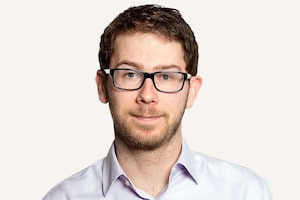Good morning. It’s James Keller in Calgary.
It’s not hard to find the signs of sick kids.
Pharmacy shelves cleared out of children’s Tylenol. Significant absences in schools, including in Edmonton where one out of seven students were absent last week (and in some schools more than one in five). Reports of busy children’s hospitals and, more worrying, pediatric intensive care units.
The rise in respiratory illnesses is being driven by not just COVID-19, but also influenza and RSV – the combination of which has prompted renewed calls for increased health measures such as indoor masking. But there appears to be little appetite among governments to re-impose such rules. The public has heard repeated assurances that it is possible to learn to live with COVID-19 and other illnesses rather than bend to restrictions such as mask mandates and business closures.
In Alberta, Premier Danielle Smith came to power last month after a United Conservative Party leadership campaign that focused heavily on COVID-19 restrictions and her promise not to bring them back – not anywhere, but in particular, not in schools. Students, she promised, would never be forced to put on masks again, and she has pledged to use legislation or the courts to ensure that doesn’t happen.
She reiterated that promise this week in response to Ontario’s Chief Medical Officer of Health recommendation that the public wear masks indoors to protect young children and an already strained health care system.
Ms. Smith said anyone who wants to wear a mask for their own protection is free to do so, but the province wouldn’t make them mandatory anywhere. She was repeatedly asked if her government would recommend masks like Ontario, but the Premier repeatedly declined to answer the question.
She said Alberta would ensure schools remain “normal” and that that includes protecting students from mask mandates. She has previously said that her government would use legislation or go to court if necessary to ensure school boards can’t introduce their own masking rules.
The Premier made those comments the same day her government fired Deena Hinshaw as the province’s chief medical officer of health, whom Ms. Smith had blamed for advising the government of former premier Jason Kenney to impose harsh pandemic restrictions.
Edmonton’s school board asked the province to provide guidance on how to respond to outbreaks, currently defined as when a school has 10 per cent of students out sick, including when a school board could consider a mask mandate. The provincial government has pointed to existing protocols, which require notices to parents and recommend other measures such as increased cleaning during outbreaks.
The Alberta government has refused to provide statistics on how many schools in the province are considered in active outbreaks, but the Edmonton board heard that more than 150 of the 213 in the district have met or exceeded a 10-per-cent threshold.
In Saskatchewan, the province’s Chief Medical Health Officer, Saqib Shahab, also declined to recommend masking or suggest they be mandated. Instead, he said it was a personal choice. He said people should assess their own risk and stay home when sick.
Likewise, B.C. has not yet announced any changes to respond to the increase of respiratory illnesses such as COVID-19 and influenza.
Health Minister Adrian Dix and Provincial Health Officer Bonnie Henry are scheduled to provide an update on this issue on Wednesday.
This is the weekly Western Canada newsletter written by B.C. Editor Wendy Cox and Alberta Bureau Chief James Keller. If you’re reading this on the web, or it was forwarded to you from someone else, you can sign up for it and all Globe newsletters here.
 Wendy Cox
Wendy Cox James Keller
James Keller